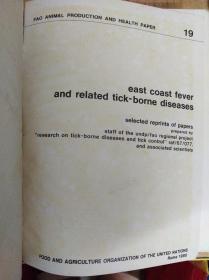
Tick Bite Diseases: Understanding the Risks and Prevention Measures
Tick-bite diseases have become a significant concern for many people around the world. These diseases are transmitted through the bites of ticks, small arachnids that can carry harmful pathogens. In this article, we will delve into the various tick-bite diseases, their symptoms, and the best ways to prevent them.
Common Tick-Bite Diseases

There are several tick-bite diseases that have been identified, each with its own set of symptoms and risks. Here are some of the most common ones:
| Disease | Caused By | Common Symptoms |
|---|---|---|
| Lyme Disease | Borrelia burgdorferi | Joint pain, fatigue, fever, headache, and a characteristic rash known as erythema migrans. |
| Ehrlichiosis | Bacteria such as Ehrlichia chaffeensis and Ehrlichia ewingii | Fever, headache, muscle aches, and sometimes a rash. |
| Rocky Mountain Spotted Fever | Bacteria called Rickettsia rickettsii | Fever, headache, muscle pain, and a rash that may appear on the wrists, palms, soles, and lower legs. |
| Anaplasmosis | Bacteria called Anaplasma phagocytophilum | Fever, headache, muscle aches, and sometimes a rash. |
| Colorado Tick Fever | Bacteria called Rickettsia rickettsii | Fever, headache, muscle aches, and sometimes a rash. |
Lyme disease is the most well-known tick-bite disease, with an estimated 300,000 cases reported in the United States each year. However, other diseases such as ehrlichiosis and anaplasmosis are also prevalent and can cause serious health issues if left untreated.
Understanding the Transmission

Ticks become infected with pathogens when they feed on infected animals, such as deer, rodents, and birds. When these ticks bite humans, they can transmit the pathogens to their hosts. The risk of infection is highest during the warmer months when ticks are most active.
Recognizing the Symptoms

The symptoms of tick-bite diseases can vary widely, and some people may not experience any symptoms at all. However, common symptoms include fever, headache, muscle aches, and fatigue. In some cases, a rash may also appear, particularly with Lyme disease. It is important to seek medical attention if you suspect you have been bitten by a tick and are experiencing any of these symptoms.
Prevention Measures
Preventing tick-bite diseases involves a combination of personal protection and environmental management. Here are some effective strategies:
- Wear Protective Clothing: When spending time in tick-infested areas, wear long-sleeved shirts, long pants, and closed-toe shoes. Tuck your pants into your socks to prevent ticks from climbing up your legs.
- Use Insect Repellent: Apply a repellent containing DEET, picaridin, or IR3535 to your skin and clothing. Follow the instructions on the product label for proper application.
- Perform Tick Checks: After spending time in tick-infested areas, thoroughly check your body for ticks. Pay special attention to areas where ticks are most likely to hide, such as the scalp, armpits, and groin.
- Remove Ticks Properly: If you find a tick attached to your skin, use fine-tipped tweezers to grasp the tick as close to the skin as possible. Pull it straight up with steady pressure to avoid leaving the mouthparts in your skin.
- Keep Your Yard Tidy: Keep your yard well-maintained by removing leaf litter, brush, and tall grass. This will reduce the number of ticks in your yard.





